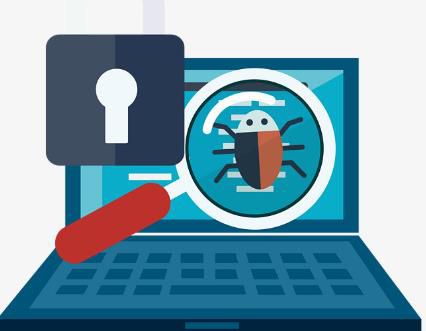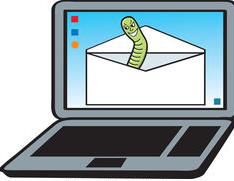A virus is a program that makes the computer slow and causes trouble.
- Without the user’s knowledge, the program gets replicated itself by making multiple copies.
- Viruses can be shared across globally which can affect numerous systems when connected to the internet.
- There are chances where your computer can be hacked.
Why are they called Virus?
- Computer viruses are called viruses, as they share some of the traits similar to biological viruses.
- Like a biological virus passes from person to person, even computer virus passes from computer to computer.
- Virus-infected computers can infect other programs or documents.

How will we know if our computer is virus affected?
- Your system will be slow.
- It will take time to load programs on your computer.
- The documents stored in the system get corrupted or deleted.
- The files get renamed with different names with some extension.
- There will be frequent unusual error messages on the screen.
What are the ways can computer virus spread?
- By opening an infected email link or an attachment from an unknown source.
- By downloading infected programs from the internet.
- It can also be transmitted through external storage such as an infected floppy disk, pen drives and CDs.
Type of computer virus
- Spyware once installed to a computer, collects information about users without their knowledge.

- Worm virus cannot get added to other program but it makes copies over and over and uses memory.

- A trojan horse always does something destructive and are not self-replicating.

Classifications of Virus
A virus can be broadly classified into three categories:

Anti-Virus Software
Definition –
- We can prevent our computer from virus attack with the help of Anti-virus software.
- These are programs designed to prevent, detect and remove software viruses.
Functions –
- It helps to scan files or directories
- It allows to schedule scans and it automatically runs to detect the virus
- It allows to initiate a scan of a specific file of your computer, or of a CD or flash drive at any time
- Removes any malicious code on detection
Ways to avoid the virus attacks –
- Scan all the email attachment before opening them
- Install your computer with a good anti-virus program to scan for viruses
- Scan the disk frequently for viruses
- Never install any pirated software

Below listed are the important tips on preventing malware safe from infecting your computer.
- Install your system with anti-virus/malware software.
- The installed anti-virus software to be kept up to date.
- Schedule regular scans or automatic update of anti-virus software.
- Secure your network; do not connect with unknown sources.
- Before opening a link, check for the send and the content.
- Keep your Information safe.
- Avoid using free Wi-Fi or connecting to unknown sources.
- All the files are to be backed up to date.
- Use a strong password with a combination of alphanumeric.
Cyber Crime –
- Cybercrime encompasses any criminal act dealing with computers and networks (called hacking).
- Additionally, cybercrime also includes traditional crimes conducted through the Internet.
- For example; Internet fraud, identity theft, and credit card account misuse or usage of a stolen card are considered to be cybercrimes.
- These are illegal activities which are committed through the use of a computer and the Internet.
Backup and Restore –
To back and restore data was introduced by Microsoft Windows in Windows Vista OS and later versions allowed users to create backups and restore from backups.
To back up your files
- Open Backup and Restore by clicking the below
Start button >> Control Panel >> System and Maintenance >> Backup and Restore.
- Do one of the following:
- If you've never used Windows first we have to backup, click Set up backup, and then follow the steps in the wizard.
- If you've created a backup before, you can wait for your regularly scheduled backup to occur, or you can manually create a new backup by clicking Back up now.
Restore files from a backup
- Open Backup and Restore by clicking the below
Start button >> Control Panel >> System and Maintenance >> Backup and Restore.
- Do one of the following:
- To restore your files, click Restore my files.
- To restore the files of all users, click Restore all users' files. If you're prompted for an administrator password or confirmation, type the password or provide confirmation.
Recap
A virus is a program that makes the computer slow and causes trouble.
- How will we know if our computer is virus affected?
- What are the ways can computer virus spread?
- Type of computer virus - Spyware, Worm, Trojan horse
- Classifications of Virus - Boot Virus, Program Virus, Macro Virus
Anti-Virus Software
Ways to avoid the virus attacks
Important tips on preventing malware
Cyber Crime
Backup and Restore





















